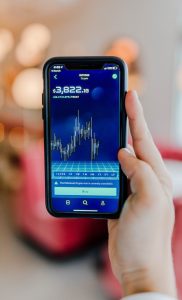The Future of Forex Trading: The Rise of Algorithmic Trading
Forex trading has come a long way since its inception. From the early days of manual trading, where traders relied on their instincts and technical analysis tools to make trading decisions, to the present-day sophisticated automated systems, the forex market has evolved significantly. One of the most significant developments in recent years is the rise of algorithmic trading, also known as automated or systematic trading.
Algorithmic trading refers to the use of computer algorithms to execute trading decisions in the financial markets. These algorithms are designed to analyze vast amounts of data, detect patterns, and make trading decisions based on predefined rules and parameters. In the context of forex trading, algorithmic trading systems can automatically execute trades based on a set of criteria, such as price movements, technical indicators, or news events.
The adoption of algorithmic trading in the forex market has been growing rapidly over the past decade. According to a report by the Bank for International Settlements, algorithmic trading accounted for nearly 80% of the daily trading volume in the foreign exchange market in 2019. This trend is expected to continue, driven by advancements in technology, increased availability of data, and the pursuit of higher efficiency and profitability by market participants.
There are several reasons why algorithmic trading has become increasingly popular among forex traders. First and foremost, algorithmic trading eliminates human emotions from the decision-making process. Unlike human traders, algorithms do not experience fear, greed, or other psychological biases that can cloud judgment and lead to irrational trading decisions. This allows algorithmic trading systems to execute trades based purely on data-driven analysis and predefined rules, leading to more consistent and disciplined trading.
Furthermore, algorithmic trading enables traders to process and analyze vast amounts of data in real-time. With the ever-increasing availability of market data, news feeds, and economic indicators, human traders often struggle to keep up with the information overload. Algorithmic trading systems, on the other hand, can process and analyze this data quickly and efficiently, identifying trading opportunities and executing trades at lightning speed. This speed advantage can be crucial in a fast-paced market like forex, where prices can fluctuate rapidly within seconds.
Another advantage of algorithmic trading is its ability to backtest trading strategies. Before deploying a trading strategy in the live market, algorithmic traders can test their strategies on historical data to evaluate their performance and identify potential flaws. This allows traders to fine-tune their strategies and optimize them for maximum profitability and risk management. Backtesting also helps traders gain confidence in their strategies, as they can see how they would have performed in different market conditions and scenarios.
Additionally, algorithmic trading offers the possibility of implementing complex trading strategies that would be difficult or impossible for human traders to execute manually. For instance, algorithmic trading systems can employ high-frequency trading techniques, where trades are executed within milliseconds or even microseconds to exploit small price discrepancies. These strategies require split-second decision-making and rapid execution, which are beyond the capabilities of human traders.
While algorithmic trading has numerous advantages, it is not without its challenges. One of the main concerns is the potential for technical glitches or system failures that can lead to substantial financial losses. The infamous “Flash Crash” of 2010, where the U.S. stock market experienced a rapid and severe drop followed by a quick recovery, was partially attributed to algorithmic trading systems. To mitigate this risk, regulators have imposed stricter rules and requirements on algorithmic trading, including circuit breakers and risk controls.
Another challenge is the potential for market manipulation or unfair advantages by high-frequency traders. Critics argue that high-frequency trading can exacerbate market volatility and create an uneven playing field for smaller traders. Regulators are continually monitoring the impact of algorithmic trading on market integrity and fairness, and they may introduce additional regulations in the future to address these concerns.
In conclusion, algorithmic trading is revolutionizing the forex market, offering traders increased efficiency, speed, and consistency. As technology continues to advance and more sophisticated algorithms are developed, algorithmic trading is expected to become even more prevalent in the future. However, it is crucial to strike a balance between the benefits of algorithmic trading and the potential risks it poses to market stability and fairness. With proper regulation and risk management, algorithmic trading has the potential to reshape the future of forex trading and provide traders with new opportunities for profitability.






